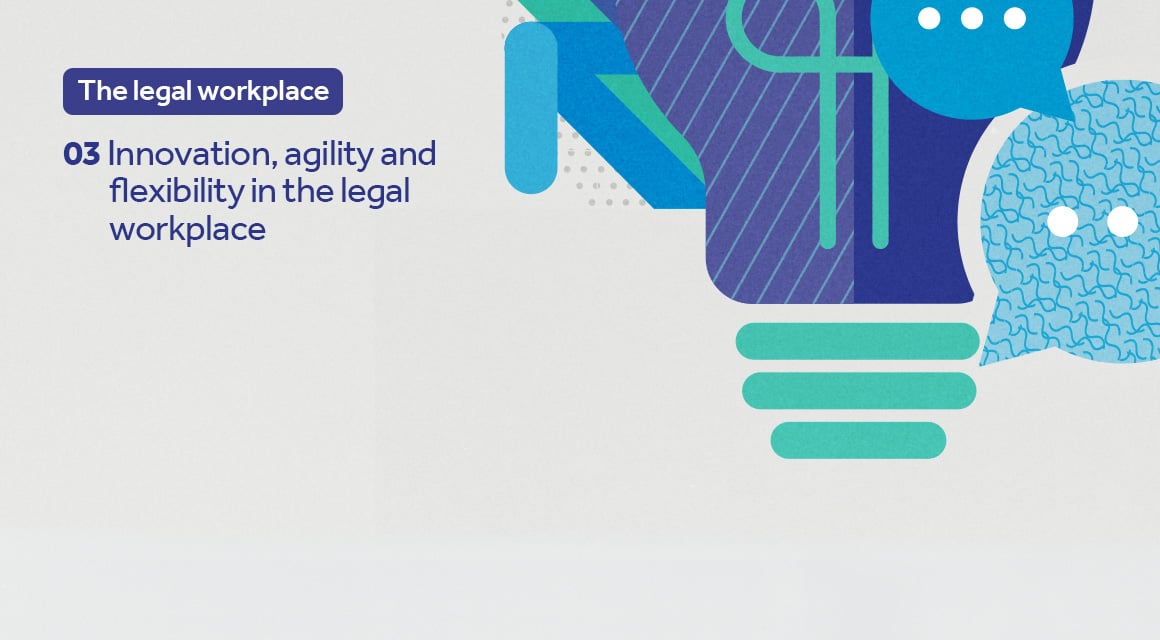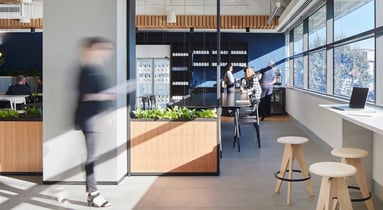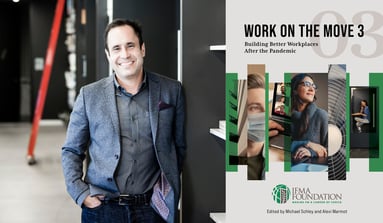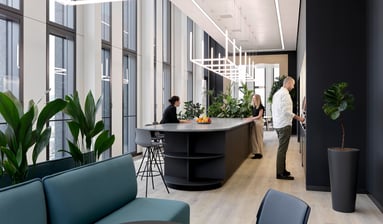Achieving flexibility in the legal workplace

With its traditional cellular offices and conventional workspace layouts, the legal sector has been reluctant to adopt more flexible ways of working. But with real estate costs at a premium, and space in some cities almost impossible to find, firms are under pressure to do more with less. By taking a more flexible approach, they may be surprised to find they can deliver greater efficiency, and more value for clients, than ever before.
Where are people working?
Workplace surveys and data show that organisations tend not to know how their space is really used. Most think that people spend the majority of their time at their desk, and that they need large ‘catch-all’ meeting rooms. In fact, time spent at the desk can be much less, and it’s useful to have multiple smaller spaces where two or three people can get into a huddle – so office design needs to support all of this.
We did 25,245 observations of 560 work settings over five days, and found that the average desk occupancy was 29%.
What are people doing?
We know that people’s time at work tends to be divided into focused work, collaboration time, learning time and social activity. There needs to be space to pursue each, where each activity can be effective and take its required time: no more, no less. So people need somewhere to go when they really need to concentrate quietly on a task, or to collaborate with others. Meetings aren’t ideal for anyone when they’re held, impromptu, around a desk.
Most activities in a traditional law firm take place in someone’s office or a meeting room (or out of the building, perhaps over lunch). If allowances must always be made for the possibility that a meeting might take place, a lot of space ends up allocated but unused. And space is expensive – as is time spent going in and out of the building.
Flexibility is key for law firms
Although somewhat late to adopt more flexible ways of working, law firms are seeing the benefits. That flexibility can take many forms and there’s no one-size-fits-all: it’s important to look at the firm’s history, culture, client profiles, growth trajectory and employee demographics, for example. And while not every law firm is ready to plunge into hot-desking, once the general idea of flexibility takes hold it can be surprising how far it can extend.
- Flexible space – Different approaches to the arrangement and use of office space can drive costs down while delivering gains in efficiency, productivity, collaboration and innovation.
- Flexible patterns – Reduced focus on presenteeism can permit flexible working patterns, in turn leading to reductions in occupancy and therefore costs.
- Flexible real estate – New approaches to real estate can deliver efficiencies as well as superior amenities (paid for by cost savings), perhaps by dividing teams across different sites or making use of adaptive, co-working and teleworking spaces.
Law firms need to tread carefully, however. With more traditional workplace cultures, it’s really important to get the transition right, and prepare people for the new workplace even as the new space is being prepared for them. Change management is a part of our integrated methodology to ensure the entire process is streamlined and comfortable for all staff.
 More like this – but much deeper?
More like this – but much deeper?
The 200 page book details all you need to know about current and future trends for your legal workplace and includes topics such as: AI, generations in the workplace, talent acquisition, work styles, client experience, and more.


